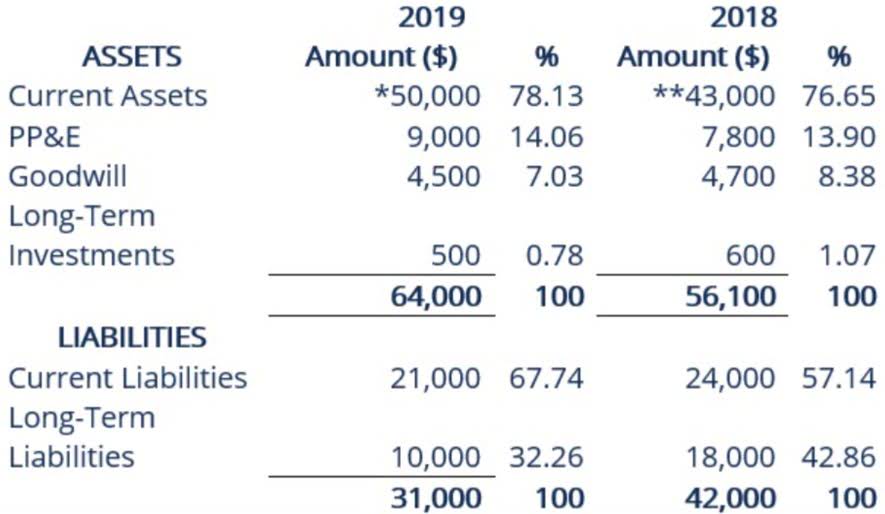
The term losses is also used to report the writedown of asset amounts to amounts less than cost. It is also used to refer to several periods of net losses caused by expenses exceeding revenues. Since ASC has completed the services, it has earned revenues and it has the right to receive $900 from the clients. The proceeds of the bank loan are not considered to be revenue since ASC did not earn the money by providing services, investing, etc.

Balance
The cost of assets = liabilities + equity inventory should include all costs necessary to acquire the items and to get them ready for sale. The 500 year-old accounting system where every transaction is recorded into at least two accounts. You should consider our materials to be an introduction to selected accounting and bookkeeping topics (with complexities likely omitted).
What Is an Asset in the Accounting Equation?
- Does this equation and its meaning still seem a bit tricky right now?
- As a result, the owner has a residual claim for the remainder of $10,000.
- With reduced liabilities, achieved by paying off debt for example, equity is increased.
- For instance, if you ran a lumber company and had 70,000 pounds of lumber sitting in a warehouse, that inventory would be considered an asset.
- The elemental and unchanging concepts that are essential in modern accounting are that a company’s owner or shareholder equity will increase when assets increase.
- Liabilities are an essential component for an organization to ensure smooth business operations.They are recorded in the balance sheet and are categorized as current and long-term liabilities based on their due date.
- If you’re interested in preparing to pursue a career in accounting, then DeVry can help you get started.
In this sense, the liabilities are considered more current than the equity. This is consistent with financial reporting where current assets and liabilities are always reported before long-term assets and liabilities. This straightforward relationship between assets, liabilities, and equity is considered to be the foundation of the double-entry accounting system. The accounting equation ensures that the balance sheet remains balanced. That is, each entry made on the debit side has a corresponding entry (or coverage) on the credit side. Liabilities are considered to be anything that is a claim against the company’s assets, such as accounts payable or other debts that the company owes.
Accounting Equation Components
The totals tell us that the company has assets of $9,900 and the source of those assets is the owner of the company. It also tells us that the company has assets of $9,900 and the only claim against those assets is the owner’s claim. The totals indicate that ASC has assets of $9,900 and the source of those assets is the owner of the company. You can also conclude that the company has assets or resources of $9,900 and the only claim against those resources is the owner’s claim. Capital essentially represents how much the owners have invested into the business along with any accumulated retained profits or losses.
Therefore cash (asset) will reduce by $60 to pay the interest (expense) of $60. The cash (asset) of the business will increase by $5,000 as will the amount representing the investment from Anushka as the owner of the business (capital). Understanding how the accounting equation works is one of the most important accounting skills for beginners because everything we do in accounting is somehow connected to it. This number is the sum of total earnings that were not paid to shareholders as dividends. So, if you really understand this equation, the rest of accounting becomes that much easier.

Why must Accounting Equation always Balance?

Ultimately, liabilities have a negative value representation and are offset using the double accounting principle. For example, if your company secured a loan from a bank for $10,000, assets would increase by $10,000, as would the company’s total liabilities. The balance of the total assets after considering all of the above transactions amounts to $36,450.


Under the accrual basis of accounting, this account reports the cost of the temporary help services that a company used during the period indicated on its income statement. A gain is measured by the proceeds from the sale minus the amount shown on the company’s accounting formula books. Since the gain is outside of the main activity of a business, it is reported as a nonoperating or other revenue on the company’s income statement.
- The totals tell us that the company has assets of $9,900 and the source of those assets is the owner of the company.
- Whatever happens, the transaction will always result in the accounting equation balancing.
- In other words, the total amount of all assets will always equal the sum of liabilities and shareholders’ equity.
- The major and often largest value assets of most companies are that company’s machinery, buildings, and property.
- As you can see from the accounting equation itself, there are three elements that make up the whole formula — assets, liabilities and equity.
- This straightforward relationship between assets, liabilities, and equity is considered to be the foundation of the double-entry accounting system.
That will be followed by looking at similar transactions at a corporation. For the past 52 years, Harold Averkamp (CPA, MBA) has worked as an accounting supervisor, manager, consultant, university instructor, and innovator in teaching accounting online. The global adherence to the double-entry accounting system Airbnb Accounting and Bookkeeping makes the account-keeping and -tallying processes more standardized and foolproof. Debt is a liability, whether it is a long-term loan or a bill that is due to be paid.


评论